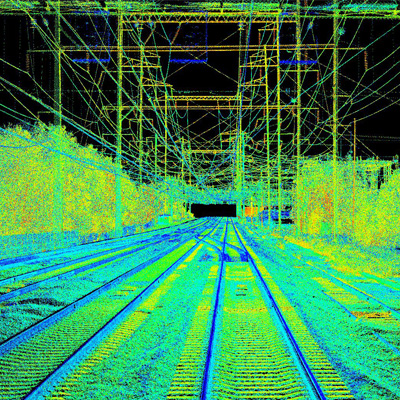CHANGE DETECTION
In an ever-evolving environment, staying ahead of changes is paramount. Our cutting-edge Lidar analysis tools are your key to monitoring and understanding transformations in your surroundings like never before.
Environmental Change Detection:
Forest Management: Lidar can be used to monitor changes in forest canopy height and structure, helping foresters track growth, logging activities, and disturbances like disease outbreaks or wildfires.
Coastline & River Monitoring: Lidar can monitor erosion, sedimentation, sea-level rise, and changes in landscape morphology over time, aiding in environmental management and protection decision making.
Wetland and Vegetation Change: It can track changes in wetland areas, plant growth, and land cover to assess the impact of climate change or human activities.
Urban Planning and Development:
Construction Site Monitoring: Lidar can detect changes in construction sites and stockpiles by comparing scans taken at different construction phases. This helps in ensuring construction progress and volumetric measurements aligns with plans and schedules.
Infrastructure Changes: Lidar is used to monitor infrastructure, such as roads, bridges, and buildings, for deformation, damage, or changes over time due to factors like aging, settling, or natural disasters.
Natural Disaster Assessment:
After a disaster like an earthquake or flood, lidar scans taken before and after the event can be compared to assess the extent of damage and changes to the terrain, infrastructure, and vegetation.
Archaeological Site Monitoring:
Lidar can be used to uncover archaeological features by comparing lidar scans taken over time to identify changes in the landscape that may indicate hidden structures or artifacts.
Mine and Quarry Monitoring:
In mining operations, lidar can detect changes in the terrain, volume of materials extracted, and the progress of excavation efforts over time.
Powerline and Utility Corridor Monitoring:
Lidar can monitor changes in the vegetation growth around power lines and utility corridors, helping utility companies to plan and prioritise maintenance activities.
Natural Resource Management:
Lidar can be used to monitor changes in land use, land cover, and topography in areas used for agriculture, forestry, and land conservation.
Change detection with lidar involves the acquisition of lidar data at different time points, followed by the registration and comparison of the datasets. Algorithms are used to identify and quantify the changes observed, such as elevation differences, structural changes, or land cover alterations. This information is valuable for decision-making, disaster management, environmental conservation, and various other applications.
Common Applications
- Land Use Change Analysis
- Vegetation Change Detection
- Natural Resource Management
- Forest Health Monitoring
- Landslide and Subsidence Monitoring
- Infrastructure Monitoring
- Damage Assessment
- Shoreline Change Detection
- Road and Railway Monitoring
- Crop Growth Monitoring
- Landfill Volume Assessment
- Powerline Corridor Monitoring
- Archaeological Site Monitoring
- Reservoir and Lake Level Monitoring
Benefits of Change Detection

Unrivalled Precision

Rapid Data Collection

Comprehensive Coverage

Infrastructure Monitoring

Cost Savings

Environmental Impact Assessment
Find out more
Find out more about our range of Aerial Lidar services that could benefit your next project.

